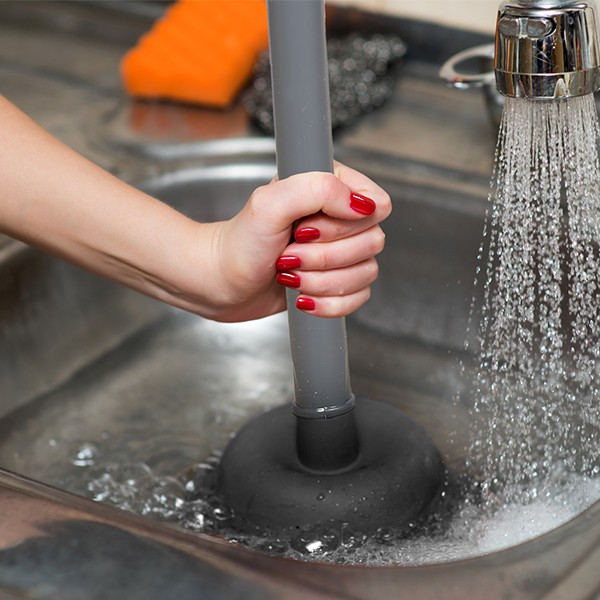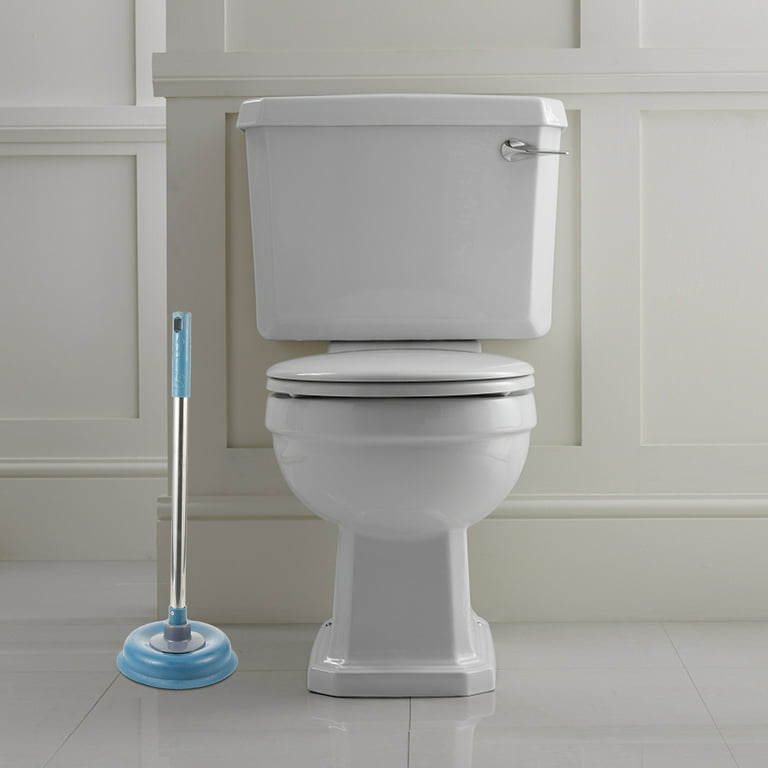Perfecting Plungers and Drain Cleaner: Key Advice
Perfecting Plungers and Drain Cleaner: Key Advice
Blog Article
How do you really feel when it comes to Tips on How to Effectively Use a Plunger?

Intro
Proper upkeep of home drains pipes is necessary for preventing blockages and making certain smooth water flow. One of the secret devices in every homeowner's toolkit is the plunger, together with numerous drainpipe cleansers designed to tackle stubborn blockages successfully. This post discovers just how to make use of bettors and drainpipe cleansers successfully to maintain your drains streaming freely.
Section 1: Understanding Bettors
Sorts of Plungers
There are a number of sorts of bettors offered, each developed for different types of drains and obstructs. One of the most usual types consist of mug plungers, flange plungers, and accordion bettors.
Just How Plungers Work
Bettors deal with the concept of producing pressure and suction to displace obstructions. When correctly used over a drain, they produce a vacuum that can pull out particles or break up obstructions.
Selecting the Right Bettor
Choosing the ideal plunger depends on the kind of drainpipe and the nature of the obstruction. Mug bettors are perfect for sinks and bathtubs, while flange plungers are better suited for toilets due to their design.
Typical Blunders with Plungers
Staying clear of these blunders makes sure reliable plunging: improper seal around the drainpipe, inadequate pressure, and not clearing bordering particles.
Area 2: Using Plungers Effectively
Preparation
Prior to plunging, guarantee the bettor covers the drainpipe entirely and forms a tight seal. Clear any kind of noticeable particles around the drain opening.
Technique
Beginning with mild diving movements to develop suction. Boost stress slowly, utilizing a stable rhythm. Repeat as required until the drainpipe clears.
Repairing Tips
If plunging does not function, attempt readjusting the seal, applying oil jelly for a far better seal, or using a various type of bettor.
Area 3: Comprehending Drain Cleansers
Kinds Of Drain Cleansers
Drain pipes cleaners can be chemical or chemical. Chemical cleaners use solid chemicals to liquify clogs, while enzymatic cleansers utilize natural enzymes to break down raw material.
Exactly How Drainpipe Cleaners Job
Chemical cleansers react with obstructions to dissolve them, while enzymatic cleaners break down natural products like hair and grease without harming pipes.
Safety Factors to consider
Constantly wear handwear covers and eye security when utilizing chemical drain cleansers. Make sure adequate ventilation and comply with maker guidelines thoroughly.
Eco-Friendly Alternatives
Think about making use of vinegar and baking soft drink or enzyme-based cleansers for environmentally friendly choices that are safer for pipes and the environment.
Section 4: Making Use Of Drainpipe Cleansers Effectively
Application Techniques
Pour chemical cleansers directly into the drainpipe opening. Allow them to benefit the advised time before flushing with hot water. Enzymatic cleaners must sit over night.
Safety measures
Stay clear of mixing different types of cleaners, as this can produce poisonous fumes. Never ever make use of chemical cleaners together with a plunger, as splashing can take place.
Handling Stubborn Blockages
For consistent blockages, consider utilizing a pipes serpent or calling an expert plumbing professional to stop damage to pipelines.
Conclusion
Finally, understanding just how to make use of plungers and drain cleansers efficiently is important for keeping healthy plumbing systems. By choosing the right tools and techniques, property owners can take on small clogs and prevent major plumbing issues down the line.
How To Properly Use A Plumbing Snake To Clear Drains
When any drain clogs in our home arise, we tend to gravitate toward the plunger and little else. In cases where the plunger and its vacuum-created pressure are not able to clear clogs, many immediately move to harmful chemicals or simply call their plumber to fix the issue.
we’re happy to help with all drain cleaning needs and concerns. This includes informing you on a few other home remedies you may have at your disposal for minor to moderate clogs, one of which is the use of a plumbing snake. Many people have never used one of these before – let’s go over the steps to take when your drain clogs and you have a plumbing snake available.
Attempt Plunger Use
The first step here, as we noted above, should indeed be to grab your plunger when you notice a drain clog and attempt to resolve it this way. If you’re unsure how to use a particular type of plunger, our plumbers can answer any questions you have. If this doesn’t do the trick, however, you move on to the snake.
Locate And Prepare Snake
A plumbing snake is a metal or plastic device that’s generally about a quarter of an inch thick. It’s design with significant extensions, meant to reach down into your clogged drain and push the clog out. Snakes also contain drain augers that will latch onto and push stubborn blockages.
If your plunger doesn’t clear a clog, locate your snake and bring it to the drain in question. We also recommend keeping a bucket nearby to collect the clog once you pull it out, plus we’d advise wearing goggles and possibly protective gloves.
Feed Snake
Once you’re ready to go, feed the snake slowly down the drain, using the crank device it comes with to keep it moving until it finds the clog. Once this happens, much of the clog will be latched onto the coil so you can pull it out, while the rest will simply break up and flow downward.
Detach Debris
Remove the snake slowly from the drain, and once you’ve done so, pick off any debris that’s stuck to the coil. This is another area where wearing gloves is a must.
Flush Drain
Finally, take a few minutes to ensure the snake has done its job correctly. If you’ve been using it on a toilet, flush the toilet a couple times and make sure everything flows well. If you’ve used it on a different drain, flush it with some room temperature water.
https://www.mybuddytheplumber.com/blog/how-to-properly-use-a-plumbing-snake-to-clear-drains/

Application Techniques
Pour chemical cleansers directly into the drainpipe opening. Allow them to benefit the advised time before flushing with hot water. Enzymatic cleaners must sit over night.
Safety measures
Stay clear of mixing different types of cleaners, as this can produce poisonous fumes. Never ever make use of chemical cleaners together with a plunger, as splashing can take place.
Handling Stubborn Blockages
For consistent blockages, consider utilizing a pipes serpent or calling an expert plumbing professional to stop damage to pipelines.
Conclusion
Finally, understanding just how to make use of plungers and drain cleansers efficiently is important for keeping healthy plumbing systems. By choosing the right tools and techniques, property owners can take on small clogs and prevent major plumbing issues down the line.
How To Properly Use A Plumbing Snake To Clear Drains
When any drain clogs in our home arise, we tend to gravitate toward the plunger and little else. In cases where the plunger and its vacuum-created pressure are not able to clear clogs, many immediately move to harmful chemicals or simply call their plumber to fix the issue.
we’re happy to help with all drain cleaning needs and concerns. This includes informing you on a few other home remedies you may have at your disposal for minor to moderate clogs, one of which is the use of a plumbing snake. Many people have never used one of these before – let’s go over the steps to take when your drain clogs and you have a plumbing snake available.
Attempt Plunger Use
The first step here, as we noted above, should indeed be to grab your plunger when you notice a drain clog and attempt to resolve it this way. If you’re unsure how to use a particular type of plunger, our plumbers can answer any questions you have. If this doesn’t do the trick, however, you move on to the snake.
Locate And Prepare Snake
A plumbing snake is a metal or plastic device that’s generally about a quarter of an inch thick. It’s design with significant extensions, meant to reach down into your clogged drain and push the clog out. Snakes also contain drain augers that will latch onto and push stubborn blockages.
If your plunger doesn’t clear a clog, locate your snake and bring it to the drain in question. We also recommend keeping a bucket nearby to collect the clog once you pull it out, plus we’d advise wearing goggles and possibly protective gloves.
Feed Snake
Once you’re ready to go, feed the snake slowly down the drain, using the crank device it comes with to keep it moving until it finds the clog. Once this happens, much of the clog will be latched onto the coil so you can pull it out, while the rest will simply break up and flow downward.
Detach Debris
Remove the snake slowly from the drain, and once you’ve done so, pick off any debris that’s stuck to the coil. This is another area where wearing gloves is a must.
Flush Drain
Finally, take a few minutes to ensure the snake has done its job correctly. If you’ve been using it on a toilet, flush the toilet a couple times and make sure everything flows well. If you’ve used it on a different drain, flush it with some room temperature water.
https://www.mybuddytheplumber.com/blog/how-to-properly-use-a-plumbing-snake-to-clear-drains/

I'm just very intrigued by A Guide to Plungers (and How to Use Them) and I hope you enjoyed the post. Sharing is caring. Helping people is fun. I treasure reading our article about How to Unclog Your Sink with a Plunger.
Click Here Report this page